Draped Bust Quarters In The Central States Coin Auction
The Lusk set of Draped Bust quarters brought strong results.
As usual, Heritage conducted the official auction of the Central States Numismatic Society (CSNS) annual convention, which is held in April or May each year, typically in Illinois. As prices realized for all U.S. coins in the CSNS auction extravaganza exceeded $25 million, it would not be practical to cover all or even many of them. The focus here is on Draped Bust quarters, which were minted in Philadelphia in 1796 and again from 1804 to 1807.
Heritage brought the auction lots to the CSNS Convention in Schaumburg, Illinois, though the auction sessions were conducted the following week at the Heritage headquarters in Dallas County, Texas. In any major auction, there will be coins that realize wholesale prices, coins that realize retail prices, and a large number that realize prices in between the corresponding wholesale and retail levels. There will also be some coins that realize prices above applicable medium-retail levels. Such variations contribute to the fun and excitement of major auctions.
The fact that this auction featured the Bust quarter set assembled by Jon Lusk is newsworthy. The Lusk set has been mentioned in coin related literature for more than a decade. Lusk was certainly serious about assembling a set, including rare die pairings. It is plausible that the offering of Lusk’s set drew more interested bidders than would have otherwise competed for Bust quarters in this auction.
As the only eighteenth century issue of U.S. quarters and as a one-year only design type, 1796 quarters are famous. There were five 1796 quarters in this CSNS auction. On May 9, an NGC graded Fair-2 1796 quarter realized $5,280. On September 17, 2015, shortly after markets for scarce and rare U.S. coins began a downturn, a different NGC graded Fair-2 1796 quarter was auctioned by Heritage for $4,700. On March 24, 2021, Stack’s Bowers auctioned a PCGS graded Fair-2 1796 quarter for $5,040.
Only two die pairings are known of 1796 quarters, B-1 and B-2. More than 750 of the B-2 die pairing are around. A standard reference, Early Quarters of the United States Mint (Rory Rea et al., 2010), indicates that between 75 and 117 B-1 1796 quarters survive. My belief is that the number is closer to seventy-five, if that many. B-1 and B-2 varieties of 1796 quarters are easily distinguished by the style and placement of the numeral ‘6’ in 1796.
The PCGS graded VG10 B-1 1796 quarter, from the Lusk Collection, realized $44,400. This is the only B-1 1796 quarter in this auction and it is likely that this price is largely a function of demand for the rare B-1 die pairing. To interpret this $44,400 result, however, I would really need to examine this coin, reflect upon my notes regarding other B-1 1796 quarters, and call some collectors of early quarters. For the first time in years, I missed viewing lots for the CSNS auction. It is clear, though, that Draped Bust quarters fared well overall.
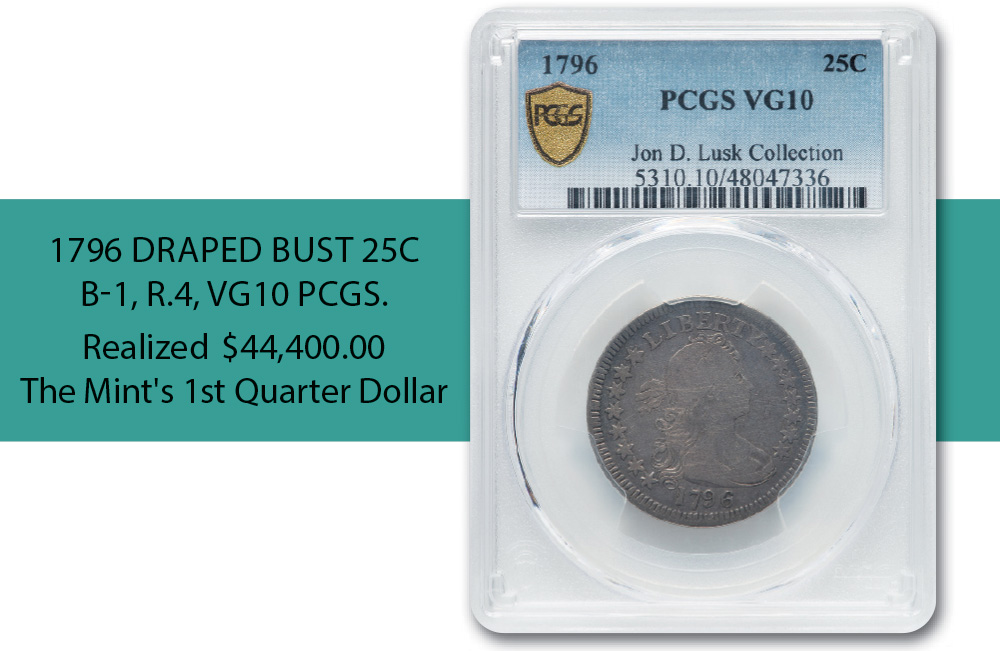
On both May 8 and May 9, Heritage auctioned a PCGS graded F12 1796 quarter of the B-2 die pairing, and each of the two realized the same price, $45,600. One was from the collection of Jon Lusk. It is unlikely that either is spectacular for the assigned F12 grade.
For a F12 grade 1796 quarter, the Greysheet-CPG medium retail estimate of $31,200 is fair, possibly a little low. PCGS reports twenty 1796 quarters as being certified as F12 and the NGC census is eight. PCGS reports another twenty-four as grading F15 and NGC census is six at F15. Although population numbers include some multiple counts of individual coins, there are more than 140 different 1796 quarters that have been certified with numerical grades in the VG8 to VF35 range.
Why did each of these PCGS graded F12 1796 quarters realize $45,600? Certainly, this was a very strong price.
In February 2021, Heritage auctioned a PCGS graded F15 1796 quarter for $22,800. On January 12, 2023, Heritage auctioned a PCGS graded VF25 1796 quarter for $40,860. Market levels for these in May 2024 could not have been much higher than levels in January 2023 or February 2021.
A PCGS graded XF40 1796 quarter in this same CSNS auction brought $51,600 on May 8. Heritage auctioned a different PCGS graded XF40 1796 quarter for $40,800 on June 17, 2021, and another for that same price, $40,800, on April 25, 2019. It is also a reality that Heritage auctioned an NGC graded XF40 1796 for $48,000 in July 2022 and a PCGS graded XF45 1796 quarter for $66,000 on January 12, 2023. The $51,600 result for a PCGS graded XF40 1796 quarter is far more consistent with market levels in May 2024 than the $45,600 price for each of two PCGS graded F12 coins.
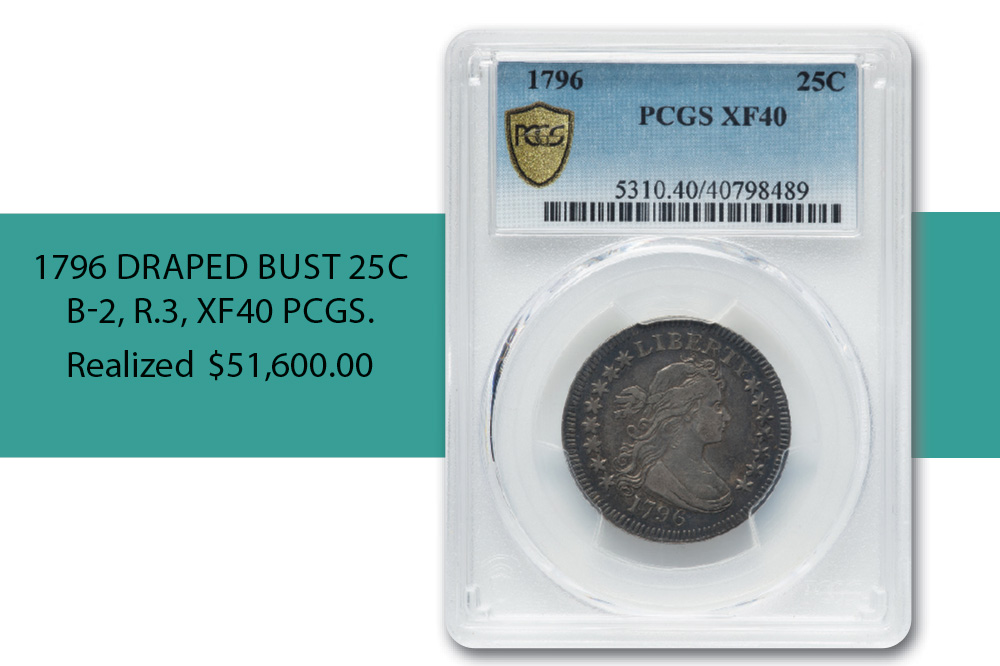
A PCGS graded AG3 1804 quarter, also from the Lusk set, realized $2,520. This result is consistent, more or less, with relatively recent auction results for certified AG3 1796 quarters.
The $15,720 result for the Lusk Collection 1804 quarter was above trends in prices for comparable 1804 quarters. This 1804 was PCGS graded VF25 during the 1990s, and is not of a particularly rare die pairing. Were any bidders seeking to upgrade it? I do not know. The CPG retail price estimate was $12,000. On June 17, 2022, Stack’s Bowers auctioned a PCGS graded VF20 1804 quarter for $9,000.
A CAC approved, PCGS graded VF25 1805 quarter brought $1,980. It is also not of a rare die pairing. This is a healthy price, though could not possibly be considered a strong price or as contributing to an argument that Draped Bust quarters have increased much in value during the last three years.
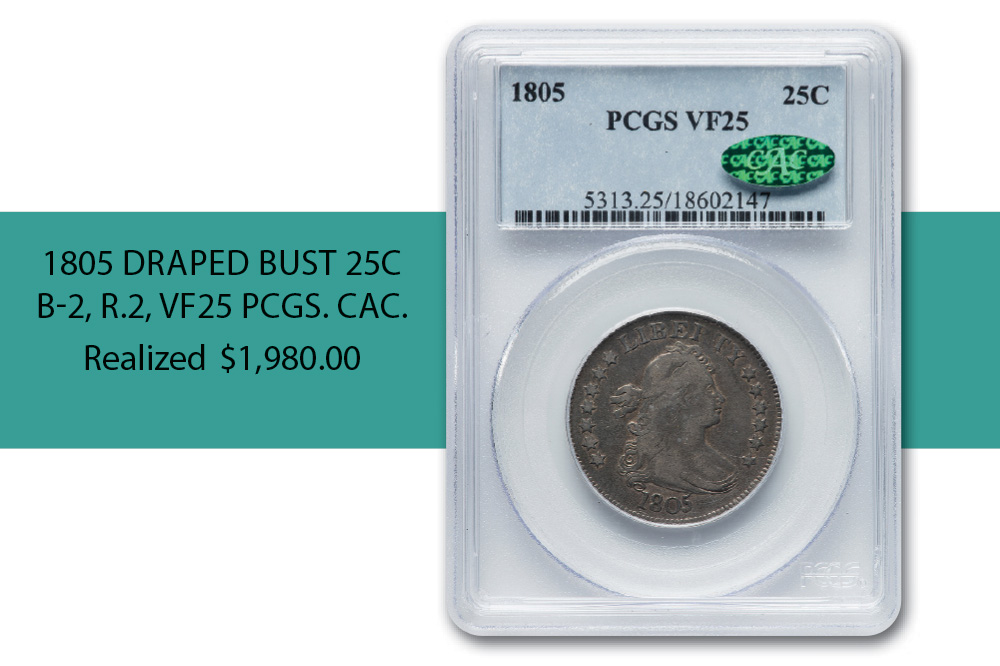
In this CSNS auction, Heritage auctioned two PCGS graded VF30 1806 quarters of the same B-3 die pairing. The coin with a CAC sticker brought $2,640 and the PCGS graded VF30 1806 without a sticker realized $1,500. Heritage auctioned this same non-CAC 1806, in the same PCGS holder with a somewhat old blue label, for $1,725 on April 28, 2010, in the CSNS auction fourteen years earlier.
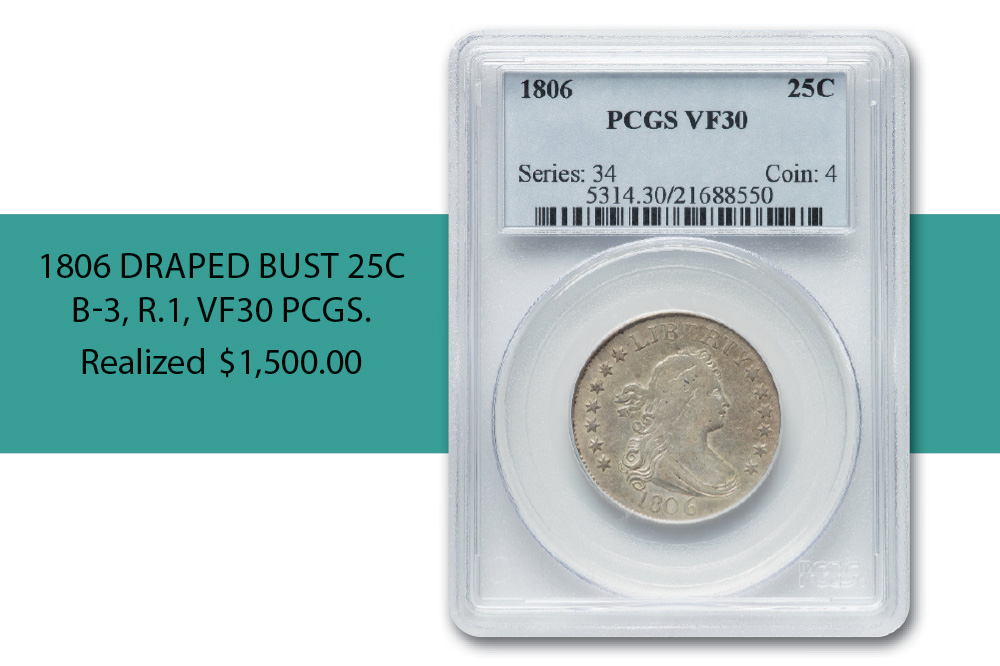
The results in the CSNS auction are consistent with my view that scarce silver coins, with some exceptions, never joined the boom in rare gold coins that became apparent in January 2021 and lasted until some point in 2023. There are some individual Draped Bust quarters, including especially noteworthy 1796 coins, that have substantially increased in value since 2019 and/or are now worth more than their respective peaks during the period from 2013 to 2015. Generally, however, the values of Draped Bust quarters were slightly higher in May 2014 than they were in May 2024.
From a logical perspective, given their scarcity and historical importance, Draped Bust quarters are good values for collectors. It is curious that zero quarters are dated from 1797 to 1803 and from 1808 to 1814. Millions of half dollars and a large quantity of dimes were minted after 1807 and before 1815. Until the 1830s, Two Reales coins of the Spanish Empire circulated very widely in the United States and were equivalent to U.S. quarter dollars. Moreover, Spanish Two Reales coins circulated to a greater extent than Spanish Four Reales coins in the U.S. Also, from 1805 or so to the 1830s, half dollars much more so than quarters were used by banks for reserves and by individuals for savings.
Copyright ©2024 Greg Reynolds, insightful10@gmail.com

Download the Greysheet app for access to pricing, news, events and your subscriptions.
Subscribe Now.

Subscribe to The Greysheet for the industry's most respected pricing and to read more articles just like this.
Source: Greg Reynolds
Related Stories (powered by Greysheet News)
View all news
The 1889-CC is the second scarcest business strike in the series.
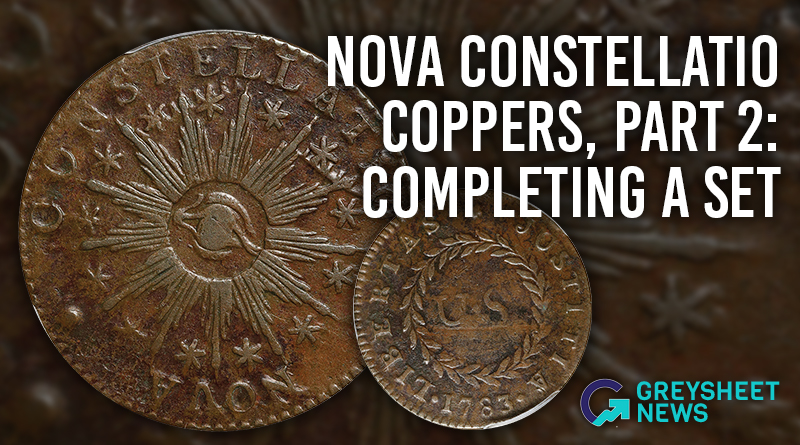
Just six coins are required for a set of true Nova Constellatio Coppers, and the coins selected need not be very expensive.
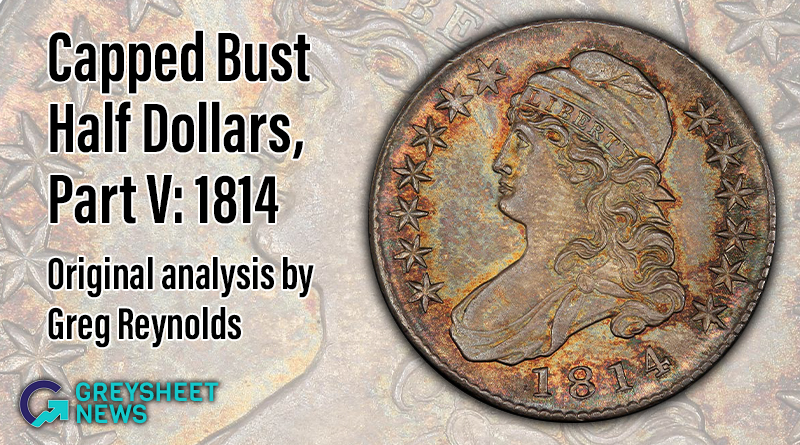
In this article Greg Reynolds analyzes a semi-key date in the Capped Bust Half Dollar series, 1814.


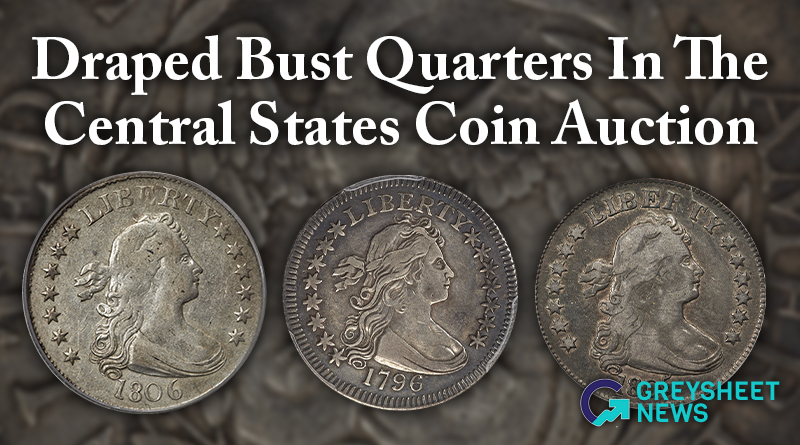






Please sign in or register to leave a comment.
Your identity will be restricted to first name/last initial, or a user ID you create.
Comment
Comments